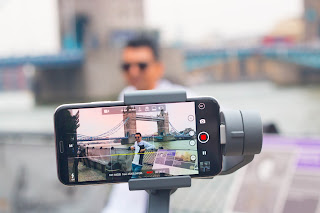More Bang for Less Buck: Learning Lessons from Infomercials
“You can do it!” – Tony Little,
infomercial pitchman
Infomercials have a reputation for ridiculous products and over-loud personalities,
but a smart businessperson can learn much from those late-night advertisements.
In the years before infomercials became a staple of wee-hour television,
networks either faded to fuzz or aired buzzing color bars each night. It was
their way of admitting they couldn’t figure out how to make programming that
made money. Then along came the brainiac who had the idea of paying networks to
air long-form commercials in those “graveyard” time slots, and suddenly
direct-response television was born.
Like so many industries, the infomercial
business, which is estimated to have a US market value of $250 billion, was disrupted by the advent of the
Internet. Now, says author J.R. Rim, “Advertisements on YouTube are the new
infomercials.” Advertisers no longer need to pay much to put their
products in front of billions of eyes. Because a company can upload videos for
free, they can afford to experiment even more. The cost of failure is low. It
also means that virtually anybody can promote themselves, their products, or
their ideas. It’s a self-promoter’s paradise.
Act
Now!
 |
| Photo by Yousouf Dina on Unsplash |
Commercials with high production value
will always have a place on television, but you no longer need a big bankroll
to get into the game. If you don’t believe me, just ask Charlie’s big brother, whose adorable assault was witnessed
by hundreds of millions of people around the world. Smartphones now can make
videos that capture a viewership that would make the most successful commercial
makers in history green with envy. Winning hearts and minds has never been
easier. Or cheaper.
Online videos are the ideal way to make
your mark, and here’s the proof:
- Videos
comprise 80 to 90 percent of online traffic.
- Approximately
55 percent of Internet users watch videos every
day.
·
About
500 million people watch Facebook videos each day.- YouTube
viewers worldwide watch about 1 billion hours of videos daily.
- More than 80 percent of all online traffic will consist of video
by 2021.
- People
are 27 times likelier to click a video ad than
a conventional banner.
- About
90 percent of consumers say product videos
affect purchasing decisions.
- Internet
users upload more video content in a month than American television
networks created in 30 years.
- Users
spend an average of 180 seconds on web pages with videos but only
90 seconds on pages without videos.
In the words
of Peter Blanchard, Chief Operating Officer at Actinium Holdings, “When
you’re selling something, you always want to go where the people are. That’s
why companies are willing to pay through the nose for airtime at the Super
Bowl. Today people are spending a lot of time watching Internet videos, so
that’s where you go.”
Video
Testimonials: 100% Risk-Free Promotion
Infomercials are an effective form of advertisement
in part because the hosts are perceived as credible and trustworthy. We buy
because we believe the salesperson. Video testimonials can be just as persuasive.
When we watch a video testimonial, we read facial expressions and body
language, which put our doubts to rest about the value of the person, product,
or the company being promoted.
Here are some other ways video testimonials can help
you:
- Increase brand awareness and retention.
- Raise product or service awareness.
- Achieve brand influencer status.
- Increase conversion rates.
- Improve search rankings.
- Boost sales and ROI
Video testimonials are SEO gold mines because search engines grade them as high-quality content. They
help build backlinks to your website, boost likes and shares (which affect
search rankings), and drive traffic to your site. And let’s not forget that
YouTube is owned by Google, so be sure that when you post YouTube videos,
use a solid meta description, include a strong title, and tag, tag, tag with
keywords and key phrases!
Tips
for Satisfaction-Guaranteed Testimonials
Roughly 84 percent of viewers watch videos on
smartphones. The ubiquity of social media means you don’t need to pay for
airtime, which means you don’t need to spend as much for production. It’s a
no-brainer.
If you’d like to try video testimonials
on for size, keep this in mind:
- Make videos one to three minutes long
- Keep it real because inauthenticity is easy to spot
- Minimize mistakes
- Use adequate lighting
- Have a script of questions for the speaker, including:
- How long have you used the product or service?
- What are the benefits?
- Can you share a story that demonstrates those benefits?
- Would you buy or use the product or service again?
- Would you recommend it to friends and family?
Frame every testimonial with a brief
intro that includes your name or logo and a 15 to 20 second commercial by the
video maker. You want everyone to know exactly who is responsible for evoking
such positive feelings.
Once you’ve crafted that compelling
testimonial, it’s time to start posting. Every video you create should end up
on these sites:
- YouTube
- Facebook
- LinkedIn
- Instagram
- Vimeo
- Your
company website
Now get out there and start filming!
But
Wait, There’s More!
Social media is increasingly image- and
video-based due to the growth of apps like Instagram and Tumblr. Video is
an incredibly powerful way to transmit information and increase engagement
rates. Videos often make us drop what we’re doing so we can watch. So act now!
Viewers are standing by!
Neill Marshall has almost 30 years of experience in healthcare executive search with involvement in over 600 hundred senior-level assignments. In 2017 he helped create and is currently a partner in HealthSearch Partners, the fifth largest healthcare executive search entity in the U.S.





Comments
Post a Comment